“A still further step can and must be taken, however, before we still have reached the bounds of the problem. Myth, as the psychoanalysts declare, is not a mess of errors; myth is a picture language. But the language has to be studied to be read. In the first place, this language is the native speech of dream. But in the second place, it has been studied, clarified, and enriched by the poets, prophets, and visionaries of untold millenniums. Dante, Aquinas and Augustness, al-Ghazali and Mahomet, Zarathustra, Shankaracharya, Nagarjuna, and T’ai Tsung, were not bad scientists making misstatements about the weather, or neurotics reading dreams into the stars, but masters of the human spirit teaching a wisdom of death and life.”
The Grimm brothers terrifying tales have seized and haunted the imaginations of children for two centuries…..
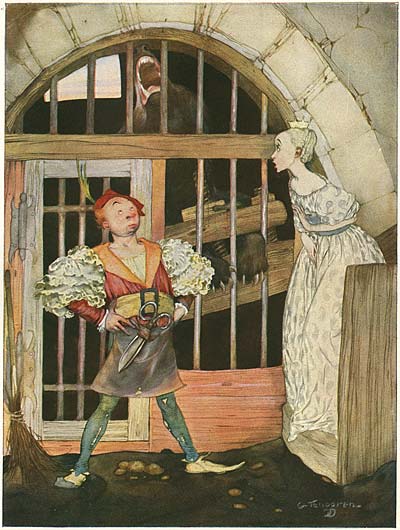
Campbell:This recognition by Durkheim of a kind of truth at the root of the image-world of myth is supported, expanded, and deepened, by the demonstration of the psychoanalysts that dreams are precipitations of unconscious desires, ideals, and fears, and furthermore, that the images of dreams resemble--broadly, but then frequently to the detail--the motifs of folk talk and myth. Having selected for their study the symbol-inventing, myth-motif-producing level of the psyche--source of all those universal themes ("Elementary Ideas") which men have read into the phenomena of nature, into the shadows of the tomb, the lives of the heroes, and the emblems of society--, the psychoanalysts have undoubtedly touched the central moment of the multifarious problem. In the light of their discussion, theories which before seemed mutually contradictory become easily coordinated. Man, nature, death, society--these have served simply as fields into which dream-meanings have been projected.
…You will be aware here of the probing, adventurous spirit that wanted to push farther and farther back in time; it is the spirit that dug for ancient myths and fairy tales, the gold of the dwarfs in the forest. For farther back than primitive Germanic, farther back than Greek and latin and Sanskrit, was the mother of all Western languages- the speech of the ancient Aryan tribes, once called Indo-Germanic and now called Indo-European. Jacob Grimm recognized that the Latin and Greek tongues must have been close relatives of primitive Germanic; all three, as well as Sanskrit, were children of the lost Indo-European language. But Latin, Greek and Sanskrit were closer to each other then they were to primitive Germanic.
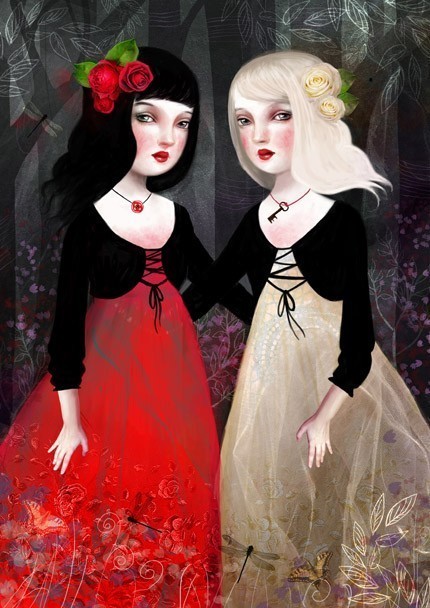
Lisa Falzon Art. Walter Benjamin:The decline of the story is the rise of the novel. Where the story-teller takes his stories from lived experience, either his or that of others, to change it into experience for his listeners; there the novelist is the lonely individual, no longer able to speak exemplarily about his most important concerns, unable to give or receive counsel. In the midst of life’s fullness, and through the representation of this fullness, the novel gives evidence of the profound despair/perplexity (Ratlosigkeit; literally 'counsellessness') of the living.
You had only to look at the various words for “father” begin with an “f” sound, sometimes disguised as a “v” – German “vater”, Dutch “vader”, Old Norse “fathir”- while Greek and Latin had “pater”, and Sanskrit had “pitar” . Primitive Germanic had broken away from the old “classical” languages, and one of the banners of its revolt was inscribed with the slogan “initial P is fead. Let’s have an F instead.”
Grimm’s law of linguistics stated that the consonants of primitive Germanic keep consistently to the same mouth areas as the corresponding consonants in the older Indo-European languages. But, and it is a big but, where you get a classical explosion, you get a Teutonic rub; where you get a classical rub, you get a teutonic explosion. There is a total consistency in this exchange. Occasionally, thing went wrong, and Jacob Grimm could not understand why; Jacob died unsure and a little puzzled, but a Dane, Karl Verner, explained the irregularities that justified Grimm’s law, then, and it has never ceased to hold.
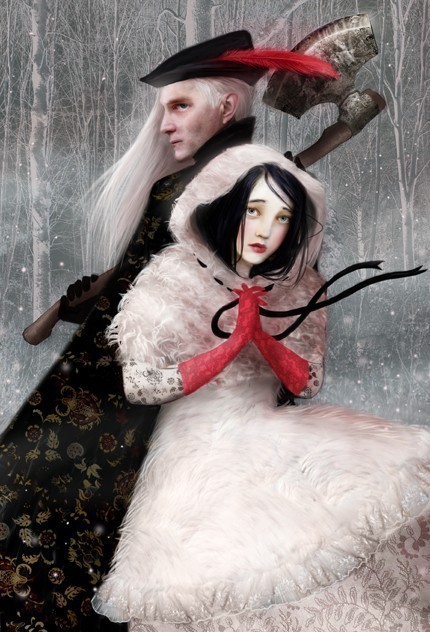
Benjamin:A new form of communication has arisen with the rise of the press (read: mass-media); this new form is information.* Information is antithetical to the story. Every morning brings us the news of the globe, and yet we are poor in noteworthy stories. This is because no event any longer comes to us without already being shot through with explanation. It is half the art of storytelling to keep a story free from explanation. It is left up to the reader to interpret things the way he understands them, and thus the narrative achieves an amplitude that information lacks.
This world of remote sound- changes may seem totally irrelevant to the “real” world of getting and spending and, for that matter, reading fairy tales, but any man who widens the vistas of knowledge deserves homage. Jacob Grimm asked a big question: how did the speech of the Teutons- the Americans, British, as well as the Germans- emerge from the lost language of the ancient Aryan wanderers? He got an answer, and he was able to encapsulate that answer in the nutshell of a law. All students of Teutonic languages are in his debt and Germany itself, of course, owes him most.
The first edition of the Grimm folk tales appeared during the last years of Napoleon,s imperial career. It was called “Children’s Tales and Household Tales”- and its reception was mixed. In Vienna the work was banned as a work of superstition; the aesthetes complained of a lack of style and grace, in an example of barking up the wrong tree. The staid complained of horror and impropriety; the newspaper reviewers were either condescending or frigid. But ordinary people seemed delighted: here in an era of often high and often pretentious literary contrivance, was a return to the very wells of literature- the tales told in the dim light of village evenings, in dim light or none at all, with work done and the fowls roosting. Moreover- and this was where Jacob the uncompromising scholar came in- the language of the tales had the freshness of well-water; it was honest dialect, with no high German sophistication. It was a vision of a good old innocent Germany.
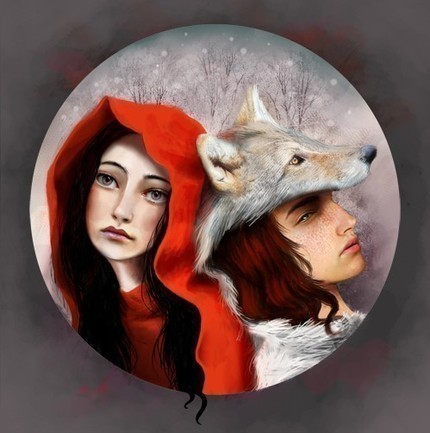
Campbell:But not only in the higher cultures, even among the so-called primitives, priests, wizards, and visionaries interpret and re-interpret myth as symbolic of "the Way": "the Pollen Path of Beauty," as it is called, for example, among the Navaho. And this Way, congenial to the wholeness of man, is understood as the little portion of the great Way that binds the cosmos; for, as among the Babylonians, so everywhere, the crux of mythological teaching has always been that "an everlasting reiteration of unchang
principles and events takes place both in space and in time, in large as in small."What nobody saw was that it was not Germany or any other land, no matter how old: it was all lands and all people. The Grimm brothers, who had dared to watch primitive germanic arise out of ancient Indo-European, had reached in this compilation- by way of German rivers- the sea of universal myth. The stories are in various forms of German peasant language , and they contain German properties, like sausages and cheeses and beer, but there is nothing about them that we can call “echt deutsch”, “essentially German.”
“Among people who follow the old ways of life without change,” wrote Wilhelm Grimm in 1815, ” attachment to inherited patterns is stronger than we, impatient for variety can realize.” He mentioned one of his storytellers, Frau Katherina Viehmann, who lived outside Kassel, and he emphasized her delight in the accurate transmission of her ancient tales: “how close she always keeps to her story and how zealous she is for its accuracy; never does she alter any part in repitition, and she corrects a mistake herself, immediately she notices it.”
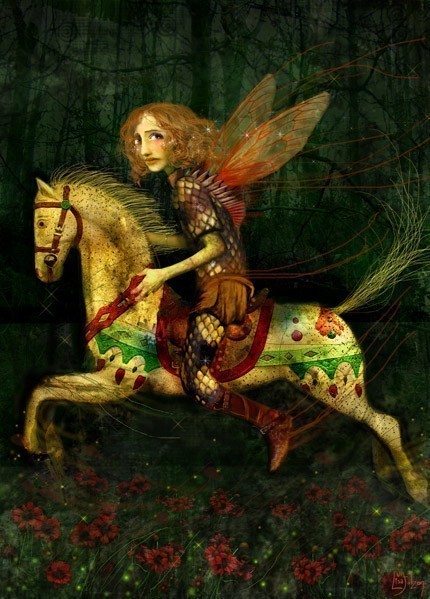
Benjamin:The stories that linger in memory are the ones free of psychological analysis. This process of memorising stories, however, is becoming less and less common, because the situation in which it most easily takes place becomes less and less common: boredom. It is the hearer entranced in the rhythm of labour - such as weaving or spinning - who most naturally assimilates the story. As craftsmanship dies out, so does the story.
Conservation is of the essence in the old agricultural way of life; even the minimal innovation is resented. It is easy to accept that there is parallel between the German language and the tales told in it: both sprang out of a culture far older than Germany’s. The migrating Aryans brought their myths and gods and charms to northwestern Europe, where they were conserved in the tales of the folk. Names changed, devils became goblins, locales became familiar localities, but the stories remained the same.
But how do we explain why so many of the Grimm tales can be found, with appropriate differences in dress, all over the world? Freud said of folk tales that they contain “the dreams of the human race.” One of these dreams is about the simple good prevailing over the subtle wicked. Most of the stories that the Grimm brothers collected are lay moral sermons.
ADDENDUM:
Joseph Campbell: Myths, therefore, as they now come to us, and as they break up to let their pregnant motifs scatter and settle into the materials of popular tale, are the purveyors of a wisdom that has borne the race of man through the long vicissitudes of his career. “The content of folklore,” writes Ananda K. Coomaraswamy, “is metaphysics. Our inability to see this is due primarily to our abysmal ignorance of metaphysics and its technical terms.”
Therefore, in sum: The “monstrous, irrational and unnatural” motifs of folk tale and myth are derived from the reservoirs of dream and vision. On the dream level such images represent the total state of the individual dreaming psyche. But clarified of personal distortions and profounded–by poets, prophets, visionaries–, they become symbolic of the spiritual norm for Man the Microcosm. They are thus phrases from an image-language, expressive of metaphysical, psychological, and sociological truth. And in the primitive, oriental, archaic, and medieval societies this vocabulary was pondered and more or less understood. Only in the wake of the Enlightenment has it suddenly lost its meaning and been pronounced insane.





 COMMENTS
COMMENTS